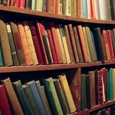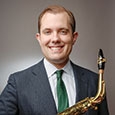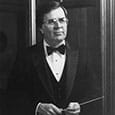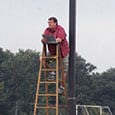For those band directors always seeking to better themselves and their students, there are so many resources that it can seem intimidating. The instantaneous access to vast amounts of great information that the internet offers has proven to be a great gift to directors far from a college or university. However, a well-stocked reference library can still be the band director’s best friend, offering advice and help when every other source is exhausted. Below is a list of some recommended literature that will find great use in any director’s bookshelf.
General Woodwind
Wind Talk for Woodwinds: A Practical Guide to Understanding & Teaching Woodwind Instruments by Mark Ely and Amy VanDeuren (Oxford). This book is normally marketed as a woodwind techniques textbook, but it offers much more. Instead of relying on text, the book is organized to be a reference, with an alphabetized list of topics for each instrument in the woodwind family. This book also contains an extremely clear and easy-to-use set of woodwind fingering and trill charts.
Woodwind Anthology: Volumes 1 & 2 (The Instrumentalist). There is a wealth of information here, along with many fascinating historical articles from some of the world’s greatest pedagogues and performers. Volume 1 covers general woodwind topics and the flute with 50 years worth of general knowledge culled from the finest woodwind performers and teachers in the world. The second volume of the set focuses on clarinet, saxophone, and double reed topics. This is both a practical and highly enjoyable source.
Flute
The Simple Flute: From A to Z by Michel Debost (Oxford University Press). This book is a delightful resource that alphabetically tackles nearly every common concern or question of the developing flutist and flute teacher. Embouchure, intonation, vibrato, and much more are covered in an engaging style.
The Flute by Ardal Powell (Yale University Press). This book is a nearly exhaustive musicological and social history of the flute. It is likely that only the most serious of students will want to read it, but this book provides fascinating information about the origins of the modern flute and its literature to the interested teacher and performer.
The Flute Book by Nancy Toff (Oxford University Press). This highly useful and interesting text discusses all of the usual aspects of flute performance and pedagogy in a way that every student and teacher will appreciate. It also contains a fine repertoire catalog, and even includes some fascinating details on things young flutists may be unaware of, including the extreme low flutes and new advancements like the quarter-tone flute. This book will answer basic questions while also inspiring curiosity.
Clarient
The Clarinet by Eric Hoeprich (Yale University Press). The origins of the clarinet are described in detail, as are the backstories of many of the instrument’s most famous pieces of literature. In addition, the author also provides accounts of the clarinet’s roles in bands and jazz.
The Cambridge Companion to the Clarinet edited by Colin Lawson (Cambridge University Press). Wide ranging essays focusing on many different aspects of performance and pedagogy are offered in this book. Topics such as repertoire, famous performers, contemporary clarinet music, and jazz clarinet are all covered.
The Clarinet and Clarinet Playing by David Pino (Dover Publications). This book focuses on many different aspects of performance technique and more. Basic concepts like embouchure, tone production, and articulation are included. In addition, however, the text includes advice on musical interpretation, and even goes so far as to offer advice to how to make single reeds.
Saxophone
The Saxophone by Stephen Cottrell (Yale University Press). This is an excellent source of information about the history and development of the saxophone. Virtually every major event, trend, and performer (classical, jazz, and pop) is discussed. Any serious student or band director eager to learn about this all-too-often misunderstood instrument should own this book.
The Cambridge Companion to the Saxophone edited by Richard Ingham (Cambridge University Press). In-cluded are essays from some of the world’s greatest teachers and scholars of the instrument, from the late Thomas Liley to the great Claude Delangle, saxophone professor at the Paris Conservatory.
The Art of Saxophone Playing by Larry Teal (Alfred Music). This was one of the first attempts at a comprehensive text on basic saxophone technique and pedagogy, and it is still the standard. While the passages on recommended literature are now out of date, virtually all of the other information in this book is just as valuable to saxophonists and teachers today as it was in the 1960s. Hand position, breathing, embouchure, articulation, vibrato, and virtually every other standard facet of performance are covered excellently.
Oboe
The Oboe by Geoffrey Burgess (Yale University Press). This work describes the history and literature of the oboe, as well as prominent oboists. A fairly recent publication, this may be quite valuable for band directors. If nothing else, it will help point them toward fine examples for their young oboists.
The Art of Oboe Playing by Robert Sprenkle (Alfred Music). Included in this reference work are all the basics of tone production, embouchure, articulation, and vibrato. In addition, this book provides a wonderful introduction to reed-making for the young oboist.
Oboe Art and Method by Martin Schuring (Oxford University Press). Schuring’s guide offers practical advice on musical basics and reed working. The book also contains information on instrument care and an excellent fingering and trill chart.
Bassoon
The Bassoon and Contrabassoon by Lyndesay Langwill (W. W. Norton). This classic guide is entirely appropriate for those enthusiastic bassoon students who wish to delve into its history and traditions. For others, it may be a bit dry, but it will still serve band directors well in understanding this sometimes mysterious instrument quite a bit better.
The Art of Bassoon Playing by William Spencer (Alfred Music). This long-standing reference work introduces many important concepts to teachers and young bassoonists. Care and maintenance of the bassoon, selecting and adjusting reeds, breathing, embouchure, vibrato, and articulation are all discussed. Reed making itself receives little attention, but students can either consult other guides or leave that subject for a later time.
The Bassoon by James B. Kopp (Yale University Press). This work tells a fairly complete history of the bassoon. In addition to the usual great information about pieces and performers, fascinating information on the contrabassoon and other rarer types of bassoon is included. The author also discusses the bassoon’s use in wind bands and sacred music.






